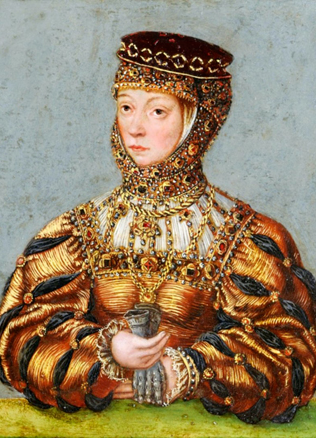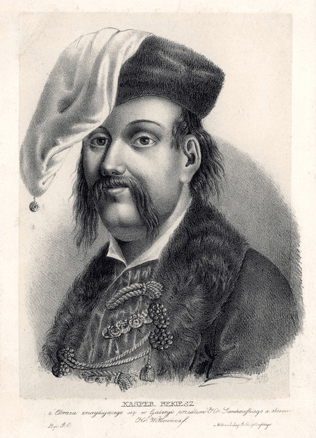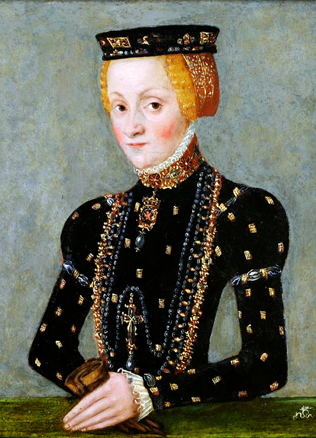How the Ruler separated his income from the empty Treasury
In the Middle Ages, the Ruler was as inseparable from the state as the Treasury from the personal wallet of the Ruler. Jokingly we can say that at that time the rulers, like bankers, felt safer when sitting on the chest containing their most valuable belongings. We can form this picture when we look at the seals of Mindaugas and Vytautas more carefully. Personal needs of the ruler and the state (or land as it was said at that time) were inseparable, and they were satisfied from the same sources. Therefore, it is not surprising that the then Treasury most often was referred to as the Treasury of the Ruler (скарб господарскии). In the course of the 15th-16th centuries, the needs of the Ruler and the state began to differ gradually (потреба господарская, потреба земская), later – the treasuries of the Ruler’s estate and land satisfying them. At the end of the 16th century these treasuries were separated from each other finally after the sources feeding them had been divided.
Do You Know?
In the Middle Ages the Treasury of Lithuania was in essence the cash of the Ruler’s household. With the Ruler constantly travelling across his lands, the Treasury could no longer be a warehouse of wealth accumulated in a single place. Its main part – the cash put into the chests and sacks and valuable immovable property (jewellery, decorations, dishes made from precious metals, furs, fabrics, etc.) constantly travelled in the carts of the Treasury together with the Ruler. From the end of the 15th century the Treasurer of the Court of the Grand Duchy of Lithuania was appointed to take care of that Treasury, and his main duty was to keep the revenue and expenditure books of the Treasury of the Court.
The Ruler’s capital “frozen” in the corn and furs
A considerably larger part of the resources of the Treasury was accumulated in the castles of the Ruler located all over the country. This procedure was established during the period of the creation of the State of Lithuania when the Ruler, his family and his army travelled from one castle to another consuming the supplies of food and fodder accumulated there. In the 15th century, the Ruler no longer visited all his castles, most often he went to those, which were on the route to Krakow and Vilnius (Melnik, Grodno and Trakai). Therefore, a lot of wealth that was difficult to realise accumulated in other castles. It so happened because taxes were most often paid in what the taxpayers produced or had rather than in cash.
Do You Know?
Hence, it was not only cash but also natural products that constituted the Ruler’s Treasury. They were received when collecting tithes: dėklas – in corn, mėsliavas – in meat (cattle), kiauninė – in marten furs, bebrinė – in beaver fur, vaškinė – in wax, honey tithe – in honey. Besides, most probably, custom duties were not always collected in cash either: a part thereof came to the warehouses of the castles in the form of salt, furs and fabrics.
Small local officials collected all the tributes, taxes and levies. They sent the collected natural products to the larger castles. And only a part of these revenues that could easily be put into circulation went to the main centres of the state. From the hints made in the sources at the turn of the 15th–16th centuries we know that officials of different ranks collected taxes – not only treasurers but also marshals and clerks. And in the first decade of the 16th century the Land Treasury was accumulated in Trakai and the Treasurer of Trakai was in charge of it. The material of the books of payments at the Ruler’s office at the same time shows what happened to the wealth accumulated in the castles located at the edge of the state. Long lists of noblemen are presented there. The Ruler permitted them to withdraw money, take fabrics, furs, corn, salt, honey, and wax from the depositories of one or another castle. These payments do not only testify to the Ruler’s generosity but also to their ability to assess high costs of transportation of the cargoes.
Thus, only a small part of the Ruler’s Treasury could have been accumulated in the form of cash in a single place. This meant that even the shrewdest treasurers could only feel but could not know for sure what the real situation of the Treasury flows was.
The needs of war complicated the affairs of the Treasury too. War always emptied the Treasury. Seeking to replenish it, as far as the 14th century, the Grand Dukes of Lithuania collected special taxes referred to by the historians as sidabrinė, which was paid in silver and served as the main source of the revenue for the military. The name of this tax became common later, and at the turn of the 14th-15th centuries it was called differently in different lands of the Grand Duchy of Lithuania: in the land of Kiev it was called padūmė (подымщина), in the land of Briansk – the capitation tax (поголовщина), in Smolensk – pažagrė (посрщина) tax. Its collection was supervised by the Land Treasurer mentioned in the Ruler’s surroundings from 1429. Despite the name of sidabrinė given to the tax by the historians, in the 15th century it could hardly have been collected in silver only. Money was not frequently found at that time (Vilnius mint started operating at the end of the 15th century only), hence, sidabrinė was often paid in natural product. This fact muddled up the affairs of taxes collected for the needs of the land and the Ruler even more because their payers, the form of the wealth collected, and the collectors of taxes were the same. In the second half of the 15th century, the noblemen began to understand sidabrinė as a special tax collected for the needs of the society rather than for the needs of the Ruler. Privileges of the Rulers of Lithuania thereby the majority of the urban communities and peasants of churches and the noblemen were exempt from payment of sidabrinė had great significance. It was collected regularly from the peasants of the Ruler (domain) only.
Castling of the Jagiellonian Treasury
The issue of sidabrinė arose anew at the beginning of the 16th century when the epoch of wars with Moscow started. At that time, despite the privileges granted, the Ruler of Lithuania, together with the Council of Lords, irregularly but quite often adopted decisions to impose sidabrinė on the noblemen. From 1512, seeking to legalise this situation, the representatives of the noblemen were started to be invited to the Sejm from the regions (districts). These attempts, however, did not appease the noblemen. As far back as the middle of the 16th century, they tried to persuade the participants in the Sejm that they were exempt from paying sidabrinė.
Do You Know?
After this issue was raised again by the noblemen of Polock at the Sejm in 1559, the enraged Ruler said to them bluntly the following: “You take sidabrinė on yourselves and pay it for the needs of the land rather than to his Highness the Ruler, therefore His Gracious Ruler does not take this tax, which is collected with the agreement of all the estates for the needs of society into his Treasury, and therefore he cannot exempt you from it.”
Separation of the revenue of the state and the Ruler presented in this declaration of the Ruler enables us to understand that the Land and Court Treasuries were separated in the 16th century. Revenue had to be collected into the Land Treasury for the state’s defence from all the estates (including those of the Ruler). Meanwhile the noblemen, complaining about sidabrinė exerted pressure on the Ruler to achieve that military expenditure should be covered from his estates. It cannot be said that the Rulers did not allocate any funds to the military needs. From 1514, the Grand Dukes reorganised administration of their domain, and instead of levies collected in kind they demanded more cash. These attempts failed to give any results therefore the Rulers had to look for a credit to meet the military needs. Thus, the Grand Dukes began to pledge their estates to the noblemen. The number of the estates that were in debt was on the increase (Alexander Jagiellon alone pledges 15 of them), and during the time of constant wars there was no hope of having them back.
Queen Bona Sforza reorganised the situation of Jagellonian landownership.
Approximately from 1518 Bona Sforza gradually created a network of the estates that maintained her, which later was inherited by Sigismund August as personal ownership.
Do You Know?
When the Polish-Lithuanian Union was created in Lublin, which provided for electing the future rulers of the Commonwealth, Sigismund August had a pretext to separate his personal interests from those of the state. On 20 July 1569, he announced the following: “…From the very beginning of Our rule to the present-day We, wishing the very best and useful to our state, Commonwealth, [for its benefit] never grudged either the Land and throne Treasuries of Our Kingdom or the Grand Duchy or our personal income (…) and We ourselves have given orders to allocate certain revenues to the Land Treasury from our personal estates, as a result of which provision of our persons and Our estates suffered greatly (…) And now that the union is already agreed upon and it has been formed (…) defence of our Commonwealth by our joint states will be faster and more powerful with the Lord’s help(…) Therefore, we are no longer going to pay different czynsz, as well as mill, grindstone and bridge taxes and other profits, which we allowed and ordered to be collected by our goodwill to the Land Treasury of the Grand Duchy of Lithuania”.
Further on the document listed nearly 60 castles and estates, which from that time were treated as the Ruler’s personal holdings, which provided resources to the Court Treasury of the Grand Duchy of Lithuania. In this way the ruler separated his own holdings from the constantly empty state Treasury.
Literature: Довнар-Запольсий М., Государственное хозяйство Великого княжества литовского при Ягеллонах, Киев, 1901; Pietkiewicz K., Wielkie Księstwo Litewskie pod rządami Aleksandra Jagiellończyka, Poznań, 1995. Lietuvos Metrika: knyga Nr. 52 (1569–1570), Užrašų knyga 52, parengė A. Baliulis, R. Firkovičius, Vilnius, 2004.
Eugenijus Saviščevas



